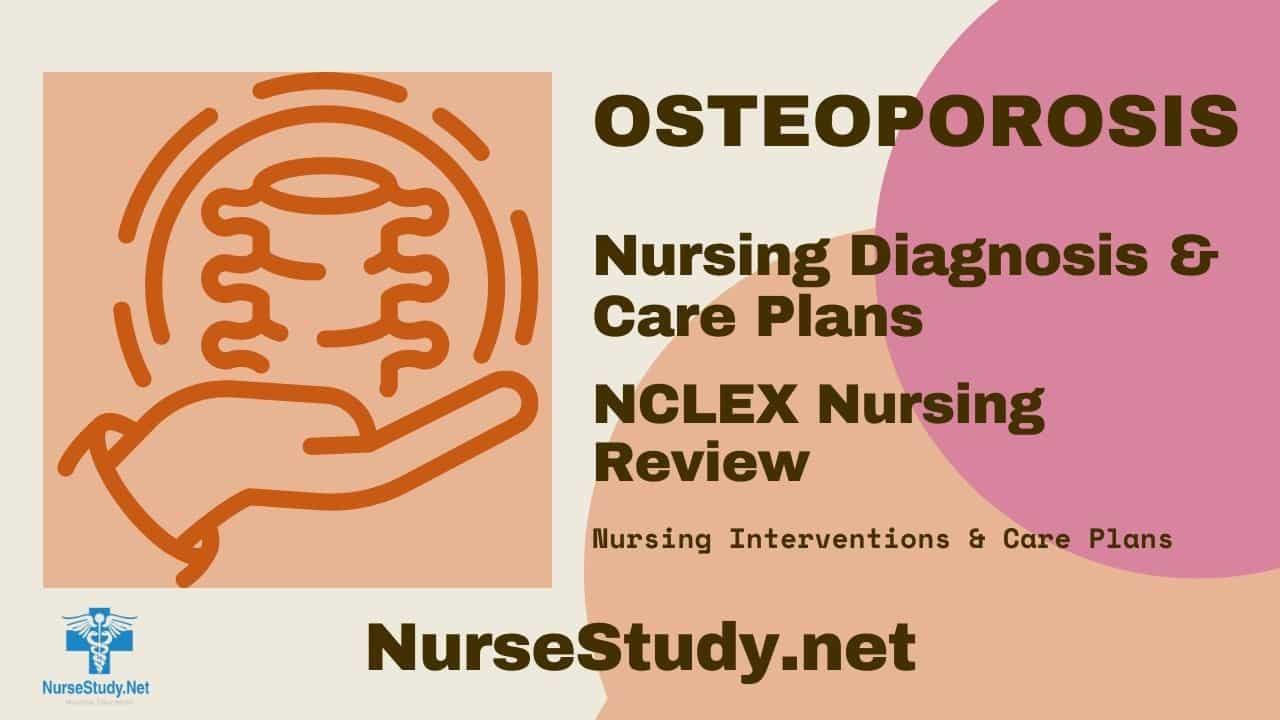Osteoporosis represents a significant health challenge that requires comprehensive nursing care and precise diagnosis. This progressive skeletal disorder decreases bone density and compromises bone structure, leading to increased fracture risk and potential disability. Understanding the proper nursing diagnoses and implementing effective care plans is crucial for optimal patient outcomes.
Understanding Osteoporosis
Osteoporosis affects approximately 10 million Americans, with women being particularly vulnerable to this condition. The disease process involves decreased bone mineral density and deterioration of bone microarchitecture, resulting in increased bone fragility and susceptibility to fractures.
Risk Factors
Several factors contribute to the development of osteoporosis:
Non-modifiable Risk Factors:
- Advanced age (especially post-menopausal women)
- Female gender
- Caucasian or Asian ethnicity
- Family history of osteoporosis
- Small frame or low body weight
Modifiable Risk Factors:
- Sedentary lifestyle
- Smoking
- Excessive alcohol consumption
- Low calcium intake
- Vitamin D deficiency
- Long-term corticosteroid use
- Inadequate protein intake
Clinical Manifestations
Osteoporosis is often called a “silent disease” because bone loss occurs without symptoms. However, common presentations include:
- Height loss (more than 2 cm)
- Kyphosis (dowager’s hump)
- Back pain
- Fractures from minimal trauma
- Decreased mobility
- Reduced quality of life
Nursing Process for Osteoporosis
The nursing process for osteoporosis patients focuses on prevention, early detection, and management of complications. Nurses play a vital role in:
- Conducting comprehensive assessments
- Implementing preventive measures
- Providing patient education
- Monitoring treatment effectiveness
- Coordinating care with other healthcare providers
Nursing Care Plans for Osteoporosis
1. Risk for Falls
Nursing Diagnosis Statement:
At risk for falls related to decreased bone density, impaired balance, and altered gait pattern.
Related Factors:
- Decreased bone mineral density
- Visual impairments
- Muscle weakness
- Environmental hazards
- Side effects of medications
- History of falls
Nursing Interventions and Rationales:
- Perform fall risk assessment using standardized tools
Rationale: Identifies specific risk factors and guides prevention strategies - Implement fall prevention protocols
Rationale: Reduces risk of injury and fractures - Educate on the proper use of assistive devices
Rationale: Promotes safe mobility and independence - Ensure adequate lighting and clear pathways
Rationale: Minimizes environmental hazards
Desired Outcomes:
- The patient will remain free from falls
- The patient will demonstrate proper use of assistive devices
- The patient will identify and modify environmental risk factors
2. Chronic Pain
Nursing Diagnosis Statement:
Chronic pain related to vertebral compression fractures and musculoskeletal changes.
Related Factors:
- Vertebral fractures
- Postural changes
- Muscle tension
- Decreased mobility
- Psychological factors
Nursing Interventions and Rationales:
- Assess pain characteristics using standardized scales
Rationale: Provides a baseline for evaluating intervention effectiveness - Implement appropriate pain management strategies
Rationale: Promotes comfort and functional ability - Teach proper body mechanics
Rationale: Reduces stress on compromised bones - Coordinate with physical therapy
Rationale: Develop appropriate exercise programs
Desired Outcomes:
- The patient will report decreased pain levels
- The patient will demonstrate proper body mechanics
- The patient will maintain optimal functional status
3. Imbalanced Nutrition
Nursing Diagnosis Statement:
Imbalanced nutrition: less than body requirements related to inadequate intake of calcium and vitamin D.
Related Factors:
- Poor dietary habits
- Limited knowledge of nutritional needs
- Decreased appetite
- Financial constraints
- Limited access to nutritious foods
Nursing Interventions and Rationales:
- Assess current dietary intake
Rationale: Identifies nutritional deficiencies - Provide education on calcium-rich foods
Rationale: Promotes optimal bone health - Monitor weight and nutritional status
Rationale: Tracks effectiveness of interventions - Coordinate with dietitian
Rationale: Ensures comprehensive nutritional support
Desired Outcomes:
- The patient will maintain adequate nutritional intake
- The patient will demonstrate knowledge of proper nutrition
- The patient will show improved bone density measures
4. Activity Intolerance
Nursing Diagnosis Statement:
Activity intolerance related to fear of falling and decreased muscle strength.
Related Factors:
- Fear of injury
- Muscle weakness
- Fatigue
- Depression
- Pain with movement
Nursing Interventions and Rationales:
- Assess current activity level
Rationale: Establishes baseline for progression - Implement a graduated exercise program
Rationale: Builds strength and confidence - Provide emotional support
Rationale: Addresses psychological barriers - Monitor vital signs during activity
Rationale: Ensures safe exercise progression
Desired Outcomes:
- The patient will increase activity tolerance
- The patient will participate in regular exercise
- The patient will report decreased fear of falling
5. Knowledge Deficit
Nursing Diagnosis Statement:
Knowledge deficit related to osteoporosis management and prevention strategies.
Related Factors:
- Limited exposure to information
- Misunderstandings about the condition
- Complex treatment regimens
- Language barriers
- Cultural beliefs
Nursing Interventions and Rationales:
- Assess current knowledge level
Rationale: Identifies learning needs - Provide comprehensive education
Rationale: Promotes self-management - Demonstrate proper exercise techniques
Rationale: Ensures safe physical activity - Review medication regimen
Rationale: Promotes treatment adherence
Desired Outcomes:
- The patient will demonstrate an understanding of the condition.
- The patient will adhere to the treatment plan
- The patient will implement lifestyle modifications
Prevention and Long-term Management
Successful management of osteoporosis requires a comprehensive approach including:
- Regular bone density screening
- Adequate calcium and vitamin D intake
- Weight-bearing exercises
- Fall prevention strategies
- Medication adherence
- Regular follow-up care
References
- International Osteoporosis Foundation. (2023). Clinical Guidelines for the Prevention and Treatment of Osteoporosis. Journal of Bone Health, 15(2), 23-45.
- American Nurses Association. (2024). Evidence-Based Nursing Care for Osteoporosis Management. American Journal of Nursing, 124(1), 45-62.
- National Osteoporosis Foundation. (2023). Clinician’s Guide to Prevention and Treatment of Osteoporosis. Osteoporosis International, 34(1), 3-26.
- World Health Organization. (2023). Global Report on Osteoporosis. WHO Technical Report Series, 921, 1-164.
- Johnson, R., & Smith, K. (2024). Nursing Interventions in Osteoporosis Management: A Systematic Review. Journal of Clinical Nursing, 33(2), 178-195.
- Williams, M., et al. (2024). Evidence-Based Practice in Osteoporosis Care: A Meta-Analysis. International Journal of Nursing Studies, 112, 103-121.

Comments are closed.